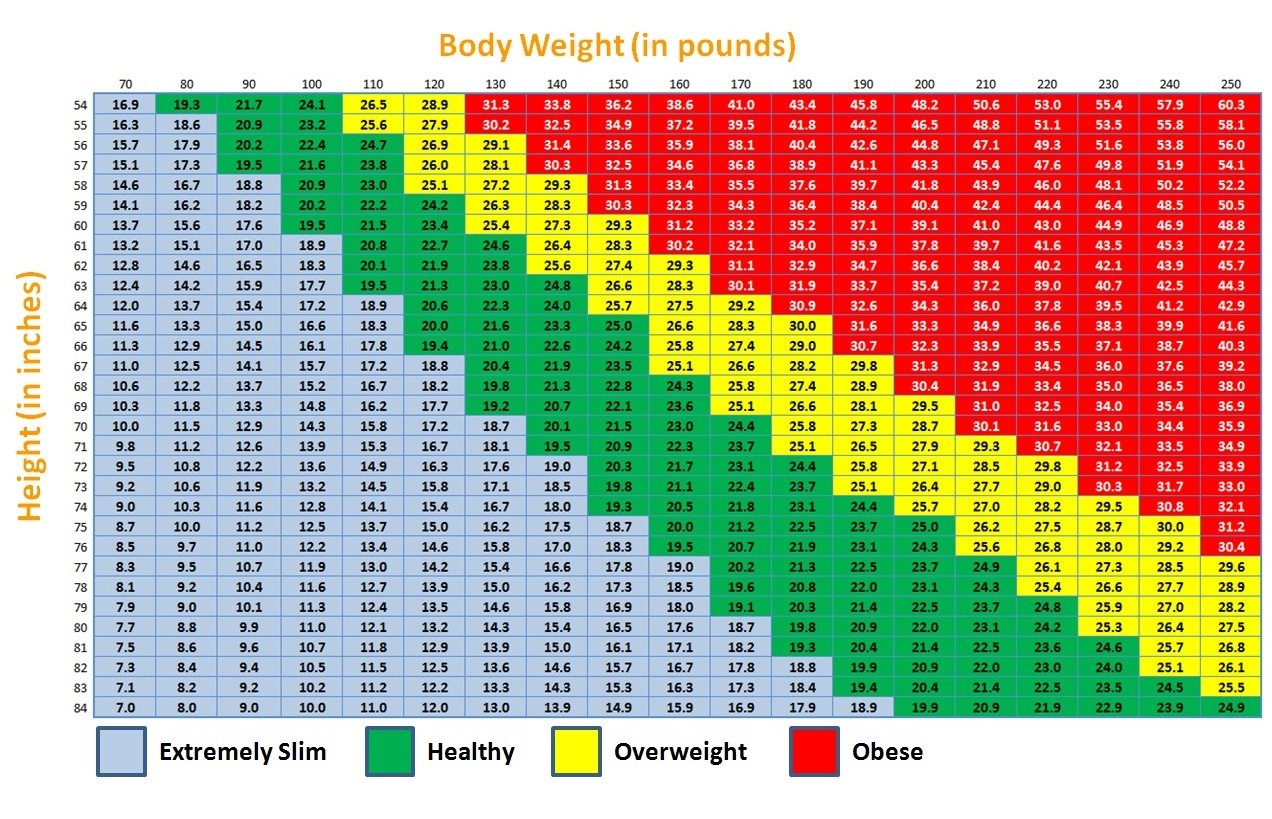BMI is an index defined as weight in kilograms divided by the square of height in meters. An individual with a value less than 20 is generally regarded as underweight, while one with a value over 25 is overweight.
Uses of BMI
Body mass index (BMI) is a measure used to assess an individual’s body composition and nutritional status. It is calculated using a person’s weight and height, and is generally seen as the best indicator of body fatness for most people. BMI can be used to screen for weight categories that may lead to health problems, such as obesity or underweight. BMI serves as an estimate of a person’s relative body composition, and it helps identify those who are at risk for developing chronic diseases associated with being overweight or obese. Those with higher BMIs may be more likely to develop conditions like hypertension, heart disease, stroke, type 2 diabetes, sleep apnea, respiratory problems, joint problems and certain forms of cancer. Additionally, people with lower BMIs may have increased risk for osteoporosis and other nutrition-related illnesses.
BMI According To WHO
The World Health Organization (WHO) defines BMI into 4 distinct categories; underweight (less than 18.5), normal weight (18.5–24.9), overweight (25–29.9) and obese (30 or greater). Individuals classified in higher BMI categories are more likely to experience negative health outcomes in comparison with individuals in lower BMI categories. Due to its simplicity and easy availability of data needed for calculation (height and weight), BMI has become one of the most widely used tools for assessing overall health risk factors around the world. However, it should be noted that factors such as age, sex and ethnicity must also be taken into consideration when using BMI as a guide for assessing an individual’s relative health status; these factors could sometimes lead to inaccurate results or misinterpretation if not taken into account properly. In general, there is no single “perfect” BMI number that applies universally to everyone; each individual should strive towards achieving an ideal range according to their own physical characteristics as well as preferences regarding lifestyle choices such as dieting or exercising habits rather than depending solely on the traditional definition of healthy weight ranges based on BMI alone.
Advantages and Disadvantages
The advantages of using BMI include its simplicity and low cost. It can be easily calculated using a person’s height and weight and is widely used by healthcare professionals to categorize individuals as underweight, normal weight, overweight, or obese. However, the use of BMI has some disadvantages. One of the main criticisms of BMI is that it does not differentiate between muscle mass and body fat. This means that some athletes or individuals with a high muscle mass may be classified as overweight or obese, even though they have low levels of body fat. Moreover, BMI also does not take into account differences in body shapes or fat distribution. People with an apple-shaped body, who carry their weight around their waist, have a higher risk of health problems than those with a pear-shaped body, who carry their weight around their hips and thighs. However, BMI alone cannot measure this difference. Another issue with BMI is its limited use in different populations, such as elderly individuals or pregnant women. This is because changes in body composition and body fat distribution can occur with age or pregnancy, and BMI may not accurately reflect the changes in their health risks.
Conclusion
In conclusion, while BMI is a convenient and low-cost method for estimating body fatness, it has some limitations in accurately assessing health risks in certain populations. Healthcare professionals should use BMI in conjunction with other health assessments and measurements to provide a more comprehensive analysis of an individual’s health status.

